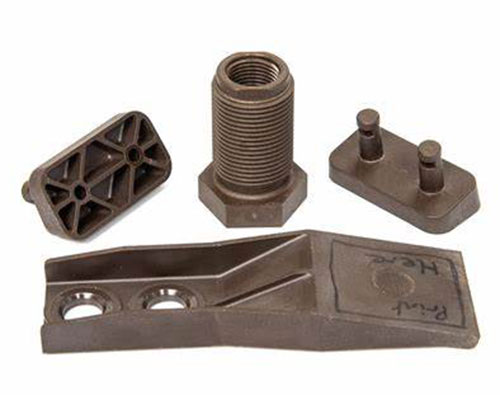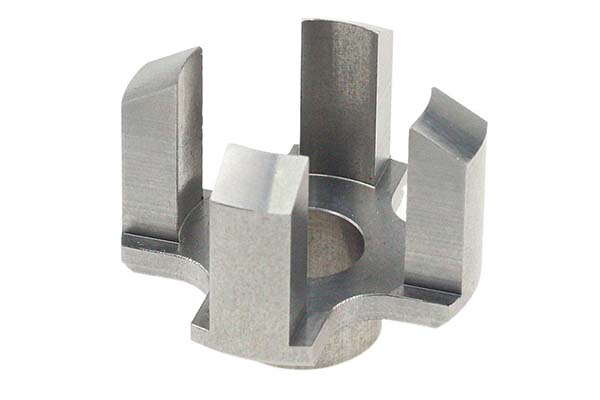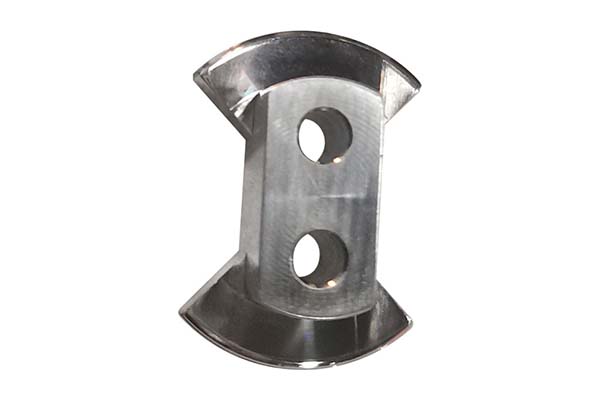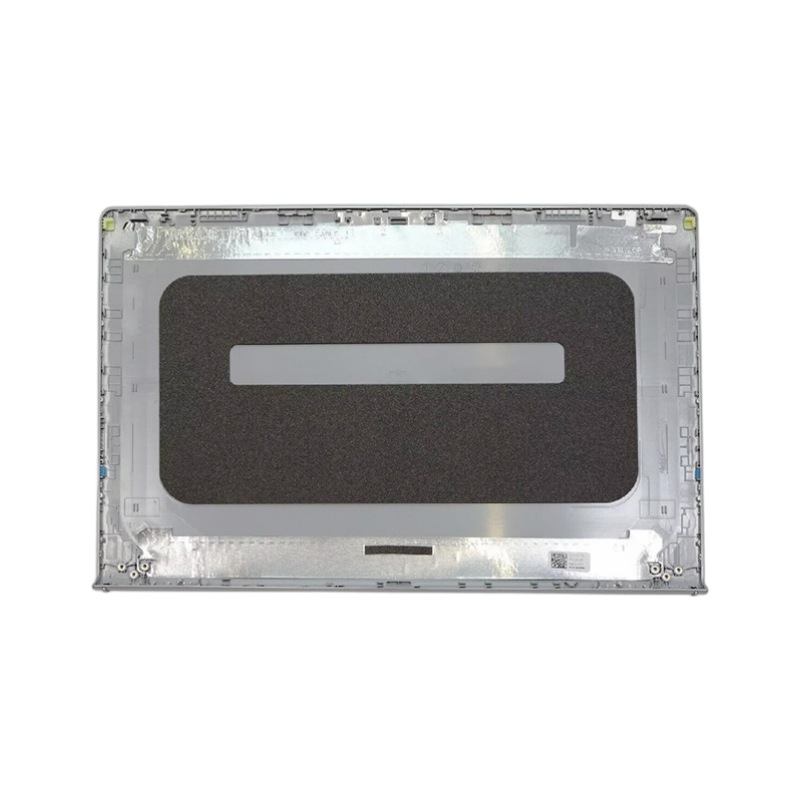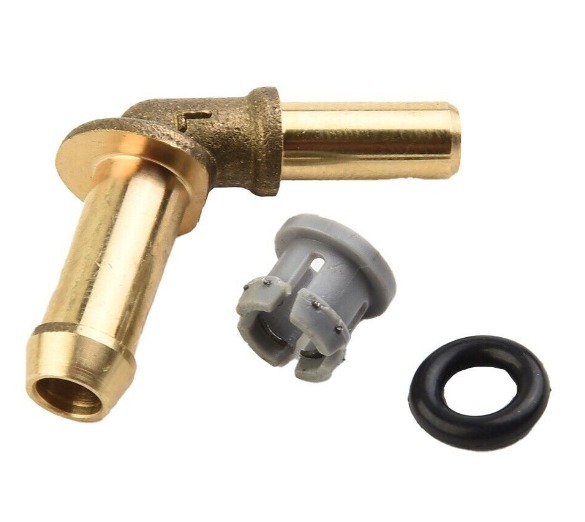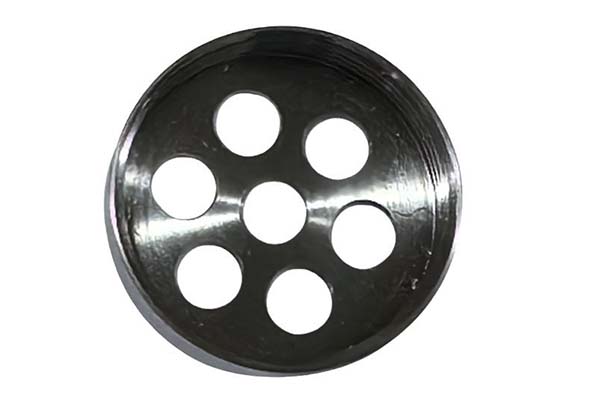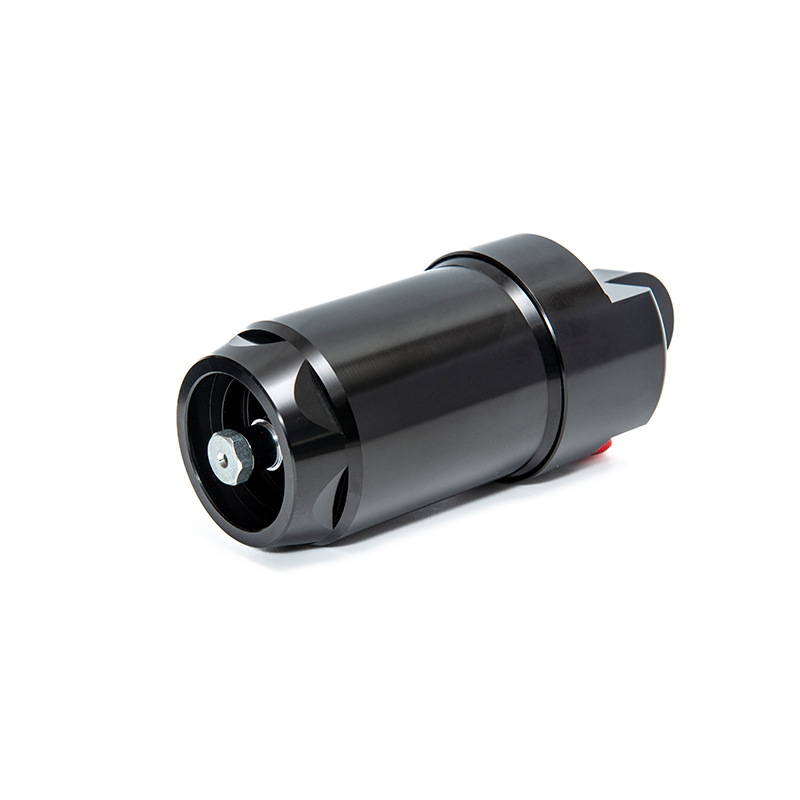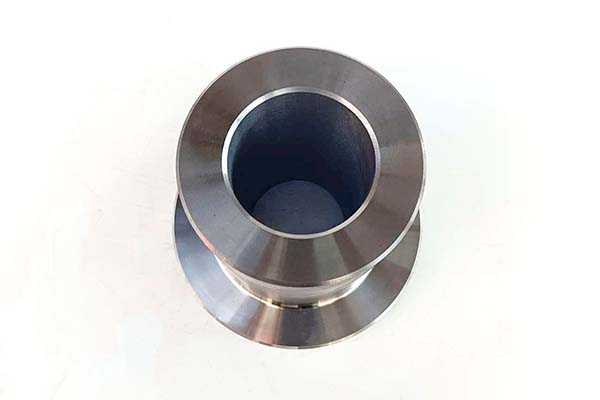1. Understanding Aerospace CNC Machining
1.1 What is CNC Machining?
CNC machining, short for Computer Numerical Control machining, is a revolutionary manufacturing process that has transformed the way parts are produced across various industries. At its core, CNC machining uses pre-programmed computer software to control the movement of factory tools and machinery.
The process begins with a digital design, typically created using Computer-Aided Design (CAD) software. This design is then translated into a set of instructions, known as G-code, which the CNC machine can understand. The G-code contains detailed information about the tool paths, speeds, feeds, and other parameters required to transform a raw material, such as a block of metal or plastic, into a finished part.
Once the G-code is loaded into the CNC machine, the machine's controller reads the instructions and directs the movement of the cutting tools. These tools can perform a variety of operations, including milling, turning, drilling, and grinding, with a high degree of precision and accuracy. The use of computer control eliminates the need for manual intervention during the machining process, reducing the risk of human error and ensuring consistent quality from part to part.
1.2 The Specifics of Aerospace CNC Machining
Aerospace CNC machining is a specialized subset of CNC machining that caters to the unique demands of the aerospace industry. The aerospace industry places extremely high standards on the components used in aircraft and spacecraft, and CNC machining plays a crucial role in meeting these standards.
High Precision Requirements
One of the most critical aspects of aerospace CNC machining is precision. Aircraft and spacecraft components must be manufactured to exact specifications, often with tolerances in the micron range. Even the slightest deviation from the design can have serious consequences, affecting the performance, safety, and reliability of the aircraft. For Yigu Technology example, engine components such as turbine blades need to be machined with such precision that they can withstand the extreme temperatures and high rotational speeds within the engine. A study by Boeing found that improving the precision of turbine blade machining by just a few microns can lead to a significant increase in engine efficiency, reducing fuel consumption by up to 3%.
Special Material Processing
The aerospace industry also makes extensive use of advanced materials that are both lightweight and strong, such as titanium, nickel-based alloys, and carbon fiber composites. These materials offer excellent strength-to-weight ratios, making them ideal for aerospace applications. However, they also pose unique challenges for machining. Titanium, for instance, has a low thermal conductivity, which can cause heat to build up in the cutting tool, leading to premature tool wear. Nickel-based alloys are known for their high strength and corrosion resistance but are difficult to machine due to their toughness. Aerospace CNC machining centers must be equipped with specialized cutting tools and techniques to effectively process these materials.
| Material | Strength-to-Weight Ratio | Machining Difficulty | Common Applications in Aerospace |
| Titanium | High | High (due to low thermal conductivity) | Aircraft frames, engine components |
| Nickel-based Alloys | High | High (due to toughness) | Turbine blades, engine casings |
| Carbon Fiber Composites | Very High | Medium (specialized tools required) | Wing structures, fuselage parts |
Complex Geometries
Aerospace components often feature complex geometries that are designed to optimize aerodynamics, reduce weight, and improve performance. CNC machining allows for the creation of these intricate shapes with ease. For Yigu Technology example, the design of a modern aircraft wing involves complex curves and contours to enhance lift and reduce drag. Five-axis CNC machining, which enables the cutting tool to move in five different directions simultaneously, is commonly used in aerospace manufacturing to produce these complex parts. This technology not only increases machining efficiency but also reduces the number of setups required, further improving precision and reducing production time.
3. How Aerospace CNC Machined Parts Improve Flight Performance
3.1 Enhanced Precision and Tolerance
In aerospace, precision is not just a matter of quality; it's a matter of life and death. Aerospace CNC machined parts are manufactured with an astonishing level of precision, often achieving tolerances in the micron range. This high level of accuracy is crucial for several reasons.
Firstly, precise parts ensure a perfect fit within the aircraft's complex assembly. For Yigu Technology example, in the engine, compressor blades must fit precisely into the disk slots. A study by Rolls - Royce showed that when the tolerance of compressor blade installation is reduced from 0.1 mm to 0.01 mm, the engine's compression efficiency can increase by about 2 - 3%. This improvement in compression efficiency leads to better fuel combustion, resulting in more power output and reduced fuel consumption.
Secondly, tight tolerances minimize vibrations during flight. In a turbofan engine, the rotating components, such as the fan and turbine blades, need to be balanced with extreme precision. Even a tiny imbalance due to inaccurate machining can cause vibrations. These vibrations not only reduce the lifespan of the engine components but also pose a significant safety risk. According to Airbus, engines with components machined to tighter tolerances experience 30 - 40% less vibration, leading to a more stable and reliable flight.
3.2 Material Optimization
The aerospace industry makes use of a variety of advanced materials, and CNC machining plays a vital role in harnessing their full potential.
Titanium Alloys
Titanium alloys are widely used in aerospace due to their excellent strength - to - weight ratio, high corrosion resistance, and good heat resistance. For instance, the Ti - 6Al - 4V alloy, one of the most common titanium alloys in aerospace, has a density of about 4.43 g/cm³, which is approximately 60% that of steel, while still maintaining high strength, with a tensile strength of up to 900 - 1100 MPa.
CNC machining of titanium alloys allows for the creation of complex components like aircraft landing gear parts. The ability to precisely machine titanium alloys ensures that the landing gear can withstand the high stresses during take - off and landing while remaining lightweight. A case study of Boeing 787 revealed that by using CNC - machined titanium alloy landing gear components, the overall weight of the landing gear was reduced by 15%, leading to a 3 - 5% improvement in fuel efficiency during flight.
Aluminum Alloys
Aluminum alloys are also popular in aerospace for their low density and good machinability. Alloys like 7075 aluminum, which has a density of around 2.8 g/cm³, are commonly used for aircraft structural components such as wing spars and fuselage frames.
CNC machining enables the production of intricate and lightweight structures from aluminum alloys. For Yigu Technology example, modern aircraft wings often feature CNC - machined aluminum alloy spars with complex internal ribbing. This design, made possible by CNC machining, reduces the weight of the wing structure by 20 - 25% compared to traditional designs, while maintaining the necessary strength and stiffness. This weight reduction directly contributes to better fuel efficiency and increased payload capacity.
| Material | Density (g/cm³) | Tensile Strength (MPa) | Common Applications in Aerospace |
| Titanium Alloy (Ti - 6Al - 4V) | 4.43 | 900 - 1100 | Landing gear, engine components |
| Aluminum Alloy (7075) | 2.8 | 572 | Wing spars, fuselage frames |
3.3 Complex Geometry and Design Flexibility
CNC machining has revolutionized the design and production of aerospace parts by enabling the creation of complex geometries.
One of the most prominent examples is the design of aircraft winglets. Winglets are small, upturned extensions at the tips of aircraft wings. Their complex, curved shape is specifically designed to reduce wingtip vortices, which are swirling air masses that create drag. Through CNC machining, winglets can be manufactured with the precise curvature and shape required to optimize their performance. A research by NASA found that aircraft equipped with CNC - machined winglets can reduce induced drag by 5 - 10%, resulting in a 3 - 6% improvement in fuel efficiency.
Another example is the internal cooling channels in turbine blades. Turbine blades operate in extremely high - temperature environments within the engine. To keep them from melting, they are designed with complex internal cooling channels. CNC machining, especially multi - axis CNC machining, allows for the creation of these intricate channels. These channels are designed to direct cool air through the blade, effectively cooling it. Engines with turbine blades having optimally designed and CNC - machined cooling channels can operate at higher temperatures, increasing the engine's efficiency by 4 - 6% and extending the lifespan of the blades by 20 - 30%.
4. Case Studies and Real - World Examples
4.1 Case 1: Boeing 787 Dreamliner
The Boeing 787 Dreamliner is a prime example of how aerospace CNC machined parts have significantly enhanced flight performance. One of the key components that have benefited from CNC machining is the engine's fan blades. These blades are made from advanced materials, such as titanium - aluminum alloys, which are both lightweight and strong.
Through precise CNC machining, the fan blades of the 787's engines have been optimized for better aerodynamics. The shape and surface finish of the blades are designed to reduce air resistance as the blades rotate at high speeds. According to Boeing's data, compared to previous - generation aircraft engines, the use of CNC - machined fan blades in the 787 has led to a 15% reduction in fuel consumption per seat - kilometer. This fuel efficiency improvement not only saves airlines significant operating costs but also reduces the aircraft's carbon footprint.
Another area where CNC - machined parts have made a difference is in the wing structure. The 787 features a composite - material wing, and CNC machining plays a crucial role in manufacturing the complex components of the wing. The spars and ribs of the wing are CNC - machined with extreme precision to ensure a perfect fit and to maximize the structural integrity of the wing. This has allowed the 787 to have a larger wingspan with a lighter weight compared to traditional aluminum - alloy wings. As a result, the 787 can achieve higher cruising speeds, with a top - speed increase of about 3% compared to similar - sized aircraft with conventional wing designs.
4.2 Case 2: SpaceX Dragon spacecraft
The SpaceX Dragon spacecraft is designed to operate in the harsh environment of space, and the use of CNC - machined parts has been instrumental in its success. One of the critical components of the Dragon spacecraft is the heat shield. The heat shield is responsible for protecting the spacecraft and its occupants during re - entry into the Earth's atmosphere, where temperatures can reach up to 1,650°C (3,000°F).
CNC - machined parts are used in the construction of the heat shield's support structure. These parts are made from high - temperature - resistant materials, such as Inconel alloys. The precision of CNC machining ensures that the support structure can withstand the extreme thermal and mechanical stresses during re - entry. In previous missions, the Dragon spacecraft has successfully completed multiple re - entries, with the heat shield remaining intact and fully functional, thanks in large part to the high - quality CNC - machined support components.
In addition, the Dragon's avionics and propulsion systems also rely on CNC - machined parts. The valves and fittings in the propulsion system are machined to tight tolerances to ensure accurate fuel and oxidizer flow control. This has improved the reliability of the propulsion system, reducing the risk of mission - critical failures. According to SpaceX, the use of CNC - machined parts in the Dragon's propulsion system has increased its overall reliability by 20%, making it one of the most reliable commercial spacecraft in operation today.
7. Conclusion
In Yigu Technology conclusion, aerospace CNC machined parts have become an indispensable part of modern aviation and space exploration. Their role in enhancing flight performance is multi - faceted and far - reaching.
From the perspective of precision, the micron - level tolerances achieved by CNC machining ensure the perfect fit of components, reducing vibrations and improving the efficiency and reliability of aircraft engines. The optimization of materials, such as the use of titanium and aluminum alloys, not only reduces the weight of the aircraft but also improves its strength and durability, leading to better fuel efficiency and increased payload capacity. The ability to create complex geometries has enabled the design and production of components like winglets and turbine blades with optimized shapes, which significantly improve aerodynamics and engine performance.
FAQ
Q1: What are the most common materials used for aerospace CNC machined parts?
A1: The most common materials are titanium alloys, aluminum alloys, nickel - based alloys, and carbon fiber composites. These materials offer a combination of high strength, low weight, and excellent heat and corrosion resistance, which are essential for aerospace applications.
Q2: How does CNC machining ensure the high precision required for aerospace parts?
A2: CNC machining uses pre - programmed computer software to control the movement of tools. The machine's controller reads G - code instructions, which contain detailed information about tool paths, speeds, and feeds. This eliminates human error during the machining process. Additionally, high - quality machine tools with advanced servo - control systems and precision measuring devices are used to monitor and adjust the machining process, ensuring that parts are manufactured within the tight tolerances required by the aerospace industry.
Q3: Can CNC machining be used for small - scale aerospace production?
A3: Yes, CNC machining is highly suitable for small - scale aerospace production. It offers flexibility in production as different parts can be quickly programmed and produced without the need for extensive re - tooling. The ability to create complex geometries and high - precision parts in small quantities makes it an ideal choice for prototyping, custom - made components, or low - volume production runs in the aerospace sector.
